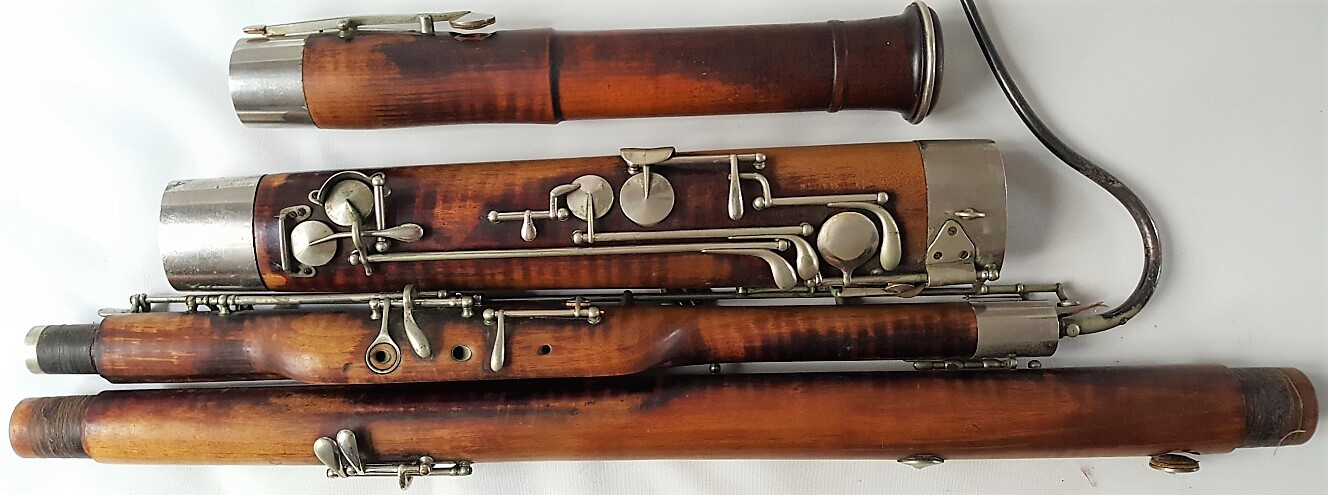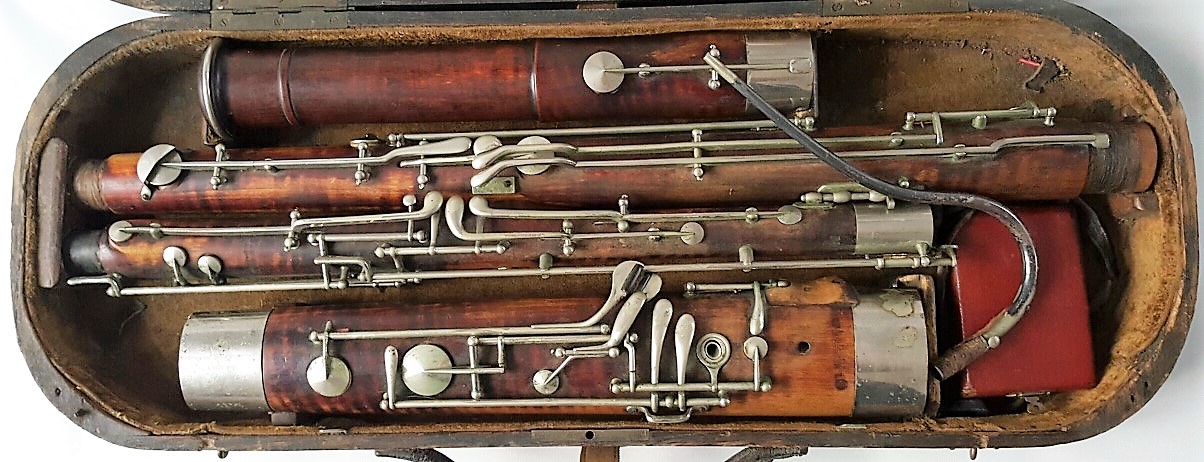Old Musical Instruments
Buying-Selling Early Musical Instruments
William Petit wpetit@sfr.fr Tel 00 33 6 13 12 43 22
Appraisal
Saxophones Selmer
Saxophones Adolphe Sax
Flûtes
Woodwind
Brasswind
Mandolins
Strings
Violin-Viola d'Amore-Quinton
Miscellaneous
Fine Bassoon Heckel # 4811 with french bell
Heckel German system
The design of the modern bassoon owes a great deal to the performer, teacher, and composer Carl Almenräder.
Assisted by the German acoustic researcher Gottfried Weber, he developed the 17-key bassoon with a range spanning four octaves.
Almenräder's improvements to the bassoon began with an 1823 treatise describing ways of improving intonation, response, and technical ease of playing by augmenting and rearranging the keywork.
Subsequent articles further developed his ideas. His employment at Schott gave him the freedom to construct and test instruments according to these new designs, and he published the results in Caecilia, Schott's house journal.
Almenräder continued publishing and building instruments until his death in 1846, and Ludwig van Beethoven himself requested one of the newly made instruments after hearing of the papers.
In 1831, Almenräder left Schott to start his own factory with a partner, Johann Adam Heckel.
Heckel builds bassoons with what the factory calls three different styles of bells; German, French and Italian bells
This one is the french bell.







